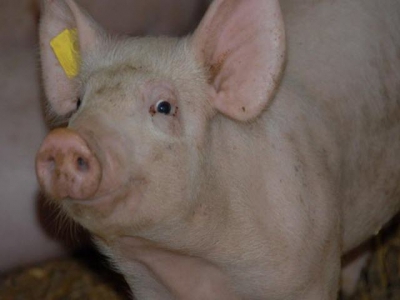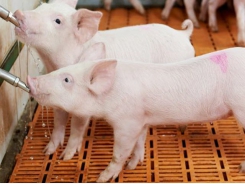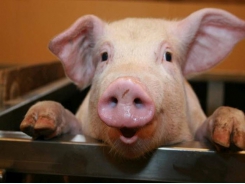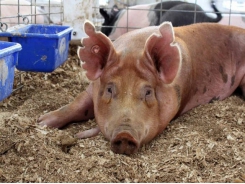Listeria implicated in diarrhea in finishing swine

L. monocytogenes may cause clinical disease in finishing pigs that may result from immunosuppression due to high deoxynivalenol exposure.
The University of Veterinary Medicine — Vienna (Vetmeduni Vienna) in Austria recently announced that it has investigated what may be the first clinical report of a new form of listeriosis in finishing pigs.
In their study, researchers from Vetmeduni Vienna's Institute of Microbiology, Institute of Pathology and Institute of Milk Hygiene, under coordination by Lukas Schwartz from the University Clinic for Swine, showed that the bacterium Listeria monocytogenes, as the causative agent of listeriosis, should -- contrary to current practice -- form part of the list of differential diagnoses when finishing pigs suffer from bloody diarrhea and septicemia.
According to the announcement, the study was motivated by an episode of fatal listeriosis in finishing pigs in a pig farm in lower Austria that had an integrated fattening unit with space for 450 pigs. Clinical symptoms such as anorexia, bloody diarrhea and an increased body temperature (up to 40°C) were observed in about 10% of the finishing pigs, mostly in well-fed animals with a bodyweight of 40-100 kg. In total, 35 fattening pigs died in a period of about three weeks, the researchers said.
Two fattening pigs with clinical symptoms as well as samples of a corn silage that was fed to the pigs were investigated for further diagnostics. Molecular biological characterization isolated identical L. monocytogenes strains from samples taken from the pigs and the corn silage, Vetmeduni Vienna said.
Additionally, high deoxynivalenol content was found in the silage, the university said, noting that deoxynivalenol is a mycotoxin found as a metabolic product in affected grains that has potentially negative effects on the immune system.
"The feeding of (corn) silage contaminated by listeria, which survive under poor ensilaging conditions, was the most likely source of infection of the fattening pigs," first author Heiko Stein said.
The researchers were able to show with their study that L. monocytogenes can cause clinical disease in finishing pigs that may be the result of immunosuppression due to high deoxynivalenol exposure.
"When feeding silage, it is important that all ensilaging procedures occur under appropriate anaerobic conditions to guarantee suppression of listerial growth," Stein said.
Listeria are rod-shaped bacteria that occur naturally in many different places. Most are harmless to people. However, L. monocytogenes is anything but harmless for people or animals, Vetmeduni Vienna said.
It is known from cattle and sheep that feeding silage of poor quality can lead to L. monocytogenes transmission, causing encephalitis or bloody diarrhea, the university said. In the scientific literature, however, only a few older case reports have dealt with L. monocytogenes transmission in pig herds, despite the fact that L. monocytogenes contamination of pork products is of great concern for public health.
"Whenever bloody diarrhea combined with increased mortality occurs in fattening pigs, L. monocytogenes should be part of the list of differential diagnoses, especially if silage is part of feeding. Since, in our case, therapeutic and prophylactic measures led to a fast recovery of diseased animals, antimicrobial therapy is indicated as soon as possible to avoid further shedding of L. monocytogenes via feces and to prevent additional fatal cases," Stein concluded.
Source: University of Veterinary Medicine — Vienna, which is solely responsible for the information provided and is wholly owned by the source. Informa Business Media and all its subsidiaries are not responsible for any of the content contained in this information asset.
Related news
Tools

Phối trộn thức ăn chăn nuôi

Pha dung dịch thủy canh

Định mức cho tôm ăn

Phối trộn phân bón NPK

Xác định tỷ lệ tôm sống

Chuyển đổi đơn vị phân bón

Xác định công suất sục khí

Chuyển đổi đơn vị tôm

Tính diện tích nhà kính

Tính thể tích ao




 How to treat iron deficiency in neonatal pigs
How to treat iron deficiency in neonatal pigs  Tips for tackling issues in swine nutrition
Tips for tackling issues in swine nutrition